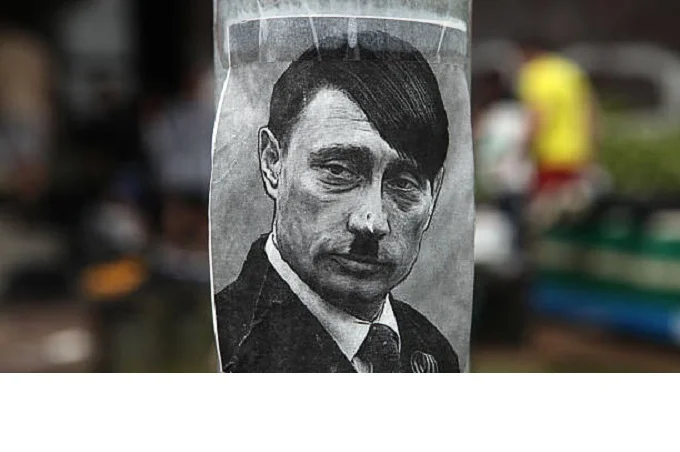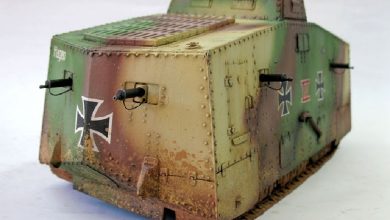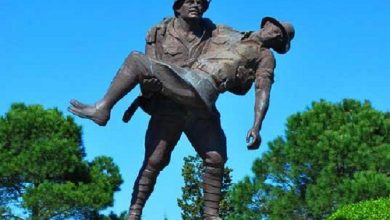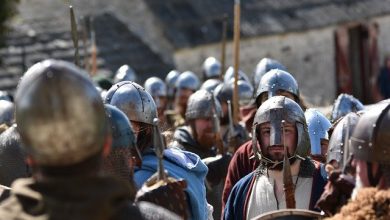What happened immediately after the death of Hitler

Adolf Hitler, Der Führer of Nazi Germany, committed suicide on April 30, 1945, taking an ampoule of poison and shooting himself with a pistol. This step was dictated by fear of capture and subsequent trial, as Soviet troops had already stormed Berlin. The death of the Fuhrer did not give any military advantages, as if it happened on July 20, 1944, after the assassination attempt on him, but caused a resonance in the world community and led to serious consequences.
Hitler’s body was burnt in a hurry so that the Soviet army would not find it
Before committing suicide, Hitler gave the last order – to cremate him and his wife’s body, Eva Braun, so that neither the USSR nor the Allies would show them off. The problem was that the Soviet troops were too close to the bunker, and it was simply impossible to find fuel somewhere in the city without running into the Red Army.
The only option that remained was to pump out the gasoline from the cars located in the underground garage of the bunker, which was filled up with concrete structures that had collapsed from the impact of artillery shells. Having obtained about 200 liters, Hitler’s chauffeur and two of his adjutants carried the bodies into the courtyard next to the bunker, doused the bodies with gasoline, and set them on fire. Martin Bormann and Joseph Goebbels closely followed the process.
There was no time to wait for the complete combustion of the corpses since the Soviet artillery was carrying out a dense shelling. Therefore, the bodies were regularly flavored with more and more portions of gasoline. The charred remains of Hitler and Brown were buried in a trench next to the bunker. Later, with all the desire of the Nazis to hide the body of their leader, NKVD officers found him.
The rats ran from the sinking ship
They began to flee even earlier, but high-ranking officials held out until the Fuhrer’s birthday, April 20. After that, they began to collect their things actively and head towards the Anglo-American troops, not to fall into the hands of the Soviet army, where a special fate. A small river of Nazi officers flowing to the West turned into a torrent after Hitler’s suicide.
Hermann Goring and Heinrich Himmler jumped off the ship among the first top officials. And if the first could somehow count on the mercy of the Western coalition, then the second, being the Reichsführer-SS, should have understood that they would not want to see him anywhere except on the gallows.
Upon learning that Goring and Himmler were bargaining with the West about leniency, Hitler, shortly before his suicide, rewrote his will and made Karl Dönitz the new president of the Reich, who was never particularly interested in politics and appointed his loyal associate Joseph Goebbels, who remained an ardent Nazi until his death, as chancellor.
Goebbels followed his Fuhrer
Joseph Goebbels, unlike Karl Dönitz, was in the same Berl in surrounded by Soviet troops, and the Red Army could come for him any minute. Without waiting for the fate from which Hitler fled, Goebbels, having spent less than a day as German chancellor, decided to follow his Fuhrer, but not alone.
He, along with his wife, decided to commit suicide. Moreover, his wife, Magda, was so determined that she decided to take her children with her, who, as she believed, had no place in post-war Germany. Then she ordered the doctor to give the children injections of morphine and then put a cyanide capsule in each of her six children in their mouths.
On May 1, 1945, Magda took cyanide, after which Goebbels shot her in the head and then shot herself. The soldier present at this reshot Goebbels, and then all the bodies, like Hitler and Brown, were burned. True, all the gasoline was spent on the Fuhrer and his wife, so the bodies of war criminal number two and his family could not be burned, and soon they were found by the Soviet troops advancing on the city.
A wave of suicides swept over Germany
Realizing that Germany, in fact, no longer exists, and retribution for the 27 million dead Soviet citizens, of whom the majority were civilians, will soon come, many Nazis who did not have time to escape to the West into the hands of the Americans who welcomed war criminals, or those who pride did not allow this, and they also went for their Fuhrer.
As we said earlier, even though Hitler’s death already meant nothing militarily, it severely undermined the morale of many Nazis who were still fighting. After the suicides of Hitler and Goebbels, the mayor of Leipzig and other officials went to the next world, taking poison. In Demmin, in three days, about a thousand residents committed suicide, realizing that Soviet troops were already on the way.
If, before the death of the top of the Third Reich, ordinary war criminals still had a ghostly chance to unite with the Allied troops against the communists, then after that, they lost all hope. A wave of suicides swept across Germany, especially among the employees of concentration camps, who were waiting for a particularly cruel fate.
Walther Wenck began the evacuation of the army and residents of Berlin
By the end of April, the Germans ran out of adult men and even older people, so the only ones who could defend the city were members of the Hitler Youth. Any attempt at desertion was punishable by immediate execution.
Walther Wenck, realizing that he could not reach Berlin and help in the city’s defense, united with the remnants of the 9th Army, Army Group Spree, and the Potsdam garrison and organized the evacuation of the soldiers and residents of Berlin. But one should not be mistaken and think that Wenck did this for selfless purposes because many of the evacuees were war criminals who wanted to escape to the western zone of occupation, where they were treated more loyally.
According to Western sources, Wenck and his army helped evacuate about 25,000 troops and approximately 250,000 civilians to the West.
Some continued to resist
Do not think that with the death of Hitler and the capture of the Reichstag, the war ended immediately. The fighting continued for a long time, and the war was active until May 7, when representatives of Karl Dönitz signed the Act of surrender in Reims.
But until that day, starting from May 2 and ending with complete surrender, Germany not only continued to exist but also made active attempts to push back the Soviet troops. Karl Dönitz, together with Ludwig Schwerin von Krosigk, created the so-called Flensburg government, which continued the war until May 23, 1945.




